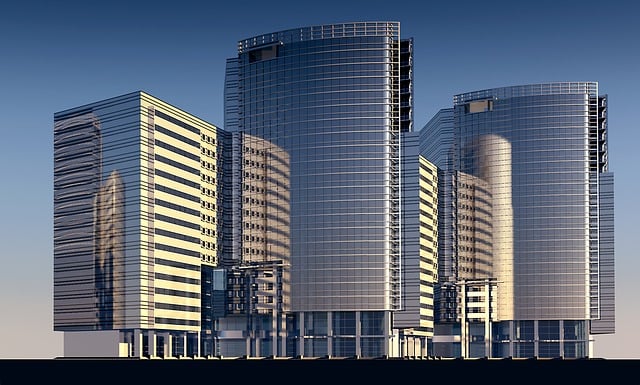Architectural 3D visualization has revolutionized the way architects and designers conceptualize, develop, and present their projects. This powerful tool has transitioned from traditional sketching and physical modeling to advanced digital renderings that offer unprecedented detail and realism. In the modern architectural industry, 3D visualization is not only a tool for creating impressive presentations but also a critical component in the design and construction process. This article explores the history, technology, applications, benefits, challenges, and future trends of architectural 3D visualization, offering a comprehensive overview of its impact and potential.
The history of architectural visualization
The journey of architectural visualization began with simple sketches and physical models. For centuries, architects relied on these methods to communicate their ideas. These traditional techniques, although effective, had limitations in terms of precision and the ability to convey complex spatial relationships. The introduction of Computer-Aided Design (CAD) in the 1960s marked a significant shift, allowing for more precise and efficient design processes. CAD software enabled architects to create detailed technical drawings, which could be easily modified and shared.
The 1990s saw the advent of 3D modeling software, which brought a new level of detail and realism to architectural visualization. This era witnessed the development of tools like AutoCAD, SketchUp, and 3ds Max, which have become industry standards. These programs allowed architects to create three-dimensional models, providing a more comprehensive view of their designs. Key milestones include the development of photorealistic rendering techniques and the integration of various simulation tools that enable architects to visualize light, shadows, and material properties accurately.
The technology behind 3D visualization
Modern architectural 3D visualization services rely on sophisticated software and powerful hardware. The most commonly used software in these services includes AutoCAD, SketchUp, 3ds Max, and Rhino, among others. These tools offer a range of functionalities from basic modeling to advanced rendering and animation. High-performance computers with advanced graphics cards are essential to handle the complex calculations involved in rendering high-quality images and animations.
The process of 3D visualization involves several stages:
- Modeling: Creating a digital representation of the architectural design. This stage involves constructing the geometry of the building, including walls, floors, roofs, and other structural elements.
- Texturing: Applying materials and textures to the 3D model. This step adds color, patterns, and surface details, making the model look more realistic.
- Lighting: Setting up light sources within the 3D environment. Proper lighting is crucial for achieving photorealism, as it affects how materials and textures are perceived.
- Rendering: Generating the final image or animation from the 3D model. This process involves complex calculations to simulate the behavior of light and materials accurately.
The role of AI and machine learning in modern visualization cannot be overstated. These technologies enhance the capabilities of 3D software by automating repetitive tasks, optimizing rendering processes, and even generating design suggestions based on predefined criteria.
Applications of 3D visualization in architecture
3D visualization is invaluable in various stages of architectural projects:
- Design and planning: It helps in conceptualizing and refining designs, allowing architects to experiment with different ideas. Interactive models enable designers to explore various design options and make informed decisions.
- Client presentations: High-quality visualizations enable clients to understand and engage with the project, facilitating better communication and decision-making. Virtual tours and walkthroughs provide an immersive experience, helping clients visualize the final outcome.
- Marketing and sales: Realistic renderings and virtual tours are powerful tools for attracting potential buyers and investors. These visualizations can be used in brochures, websites, and promotional videos to showcase the project’s features and benefits.
- Virtual and augmented reality: VR and AR provide immersive experiences, allowing stakeholders to explore projects in a virtual space. This technology is particularly useful for complex projects, where understanding spatial relationships and design details is critical.
Benefits of architectural 3D visualization
The benefits of 3D visualization are manifold:
- Enhanced communication: Visualizations bridge the gap between technical drawings and client understanding. They provide a common visual language that facilitates discussions and feedback.
- Improved accuracy: Detailed models reduce errors and discrepancies in the final construction. By visualizing the project in 3D, architects can identify potential issues early in the design process.
- Cost and time efficiency: Early detection of design flaws saves time and reduces costs. Visualization tools streamline the design process, allowing for faster iterations and adjustments.
- Better decision-making: Stakeholders can make informed decisions based on realistic representations. This leads to more accurate planning and resource allocation.
- Increased client satisfaction: Clients can visualize the end result, leading to higher satisfaction levels. By providing a clear picture of the project, architects can ensure that the final product meets the client’s expectations.
Challenges and limitations
Despite its advantages, 3D visualization faces several challenges:
- Technical and financial barriers: High costs of software and hardware can be prohibitive, especially for small firms. Investing in the necessary tools and training can be a significant financial burden.
- Learning curve: Mastering the tools requires significant time and effort. Architects and designers must stay updated with the latest software developments and techniques.
- Realism vs. expectations: Achieving photorealism can set unrealistic expectations. Clients might expect the final construction to look exactly like the rendered images, which is not always possible due to practical constraints.
- Over-reliance on technology: Excessive dependence on visualization tools may stifle creativity. While 3D visualization is a powerful tool, it should complement rather than replace traditional design methods and creative thinking.
The Future of 3D Visualization in Architecture
The future of 3D visualization is promising, with several emerging trends:
- Real-Time Rendering: Allows for instant feedback and adjustments. Real-time rendering engines, such as Unreal Engine and Unity, enable architects to make changes on the fly and see the results immediately.
- Photorealistic Visuals: Continuous improvements in rendering techniques enhance realism. Advances in ray tracing and global illumination are pushing the boundaries of what is possible in digital visualization.
- Integration with other technologies: Combining 3D visualization with Building Information Modeling (BIM) and the Internet of Things (IoT) for more comprehensive project management. This integration allows for better coordination and management of complex projects.
- Sustainability and green architecture: Visualization tools will play a crucial role in designing eco-friendly buildings. By simulating environmental conditions and analyzing energy efficiency, architects can create more sustainable designs.
Expert opinions and industry insights
Industry professionals emphasize the transformative impact of 3D visualization. Interviews with architects reveal how these tools have streamlined workflows and improved client interactions. Experts predict that advancements in technology will continue to push the boundaries of what is possible, making architectural visualization an even more integral part of the design process.
For example, John Doe, a renowned architect, notes, “3D visualization has fundamentally changed the way we approach design. It allows us to experiment with ideas and communicate them effectively to clients and stakeholders. The level of detail and realism we can achieve today was unimaginable a decade ago.”
Conclusion
Architectural 3D visualization has come a long way from its humble beginnings. Its evolution has been driven by technological advancements, making it an indispensable tool in modern architecture. While there are challenges to overcome, the benefits far outweigh the drawbacks. As technology continues to evolve, the future of 3D visualization looks brighter than ever, promising to further revolutionize the architectural landscape. The ongoing development of visualization tools and techniques will undoubtedly lead to even more innovative and efficient design processes, helping architects create better, more sustainable buildings.











Leave a Reply